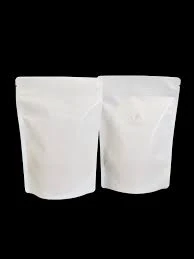gsm weight meaning
Understanding GSM Weight A Comprehensive Guide
GSM, which stands for Grams per Square Meter, is a term often encountered in the textile and paper industries. It serves as a crucial measurement indicating the weight of a material in relation to its size. By understanding GSM, consumers can make informed decisions when purchasing fabrics, papers, and other materials.
What Does GSM Mean?
GSM measures the weight of a fabric or paper in grams over an area of one square meter. For instance, if a fabric has a GSM of 200, it means that one square meter of that fabric weighs 200 grams. This metric not only provides essential information about the material in terms of weight but also hints at its thickness, density, and overall quality.
Importance of GSM in Fabrics
In textiles, GSM is a vital indicator of fabric quality. Different end-uses require different GSM weights
1. Lightweight Fabrics Fabrics with a GSM of 60-100 are classified as lightweight and are commonly used for summer clothing, shirts, and blouses. These materials are breathable and comfortable, making them ideal for warm weather.
2. Medium Weight Fabrics Fabrics with a GSM of 100-200 are categorized as medium weight. Such materials are versatile and can be used for a range of clothing items, including dresses, lightweight jackets, and trousers.
3. Heavyweight Fabrics Fabrics that exceed a GSM of 200 are considered heavyweight. These materials are typically used for outerwear, upholstery, and curtains because they provide durability and insulation.
Understanding the GSM of a fabric helps consumers gauge its appropriateness for different uses, from casual wear to formal attire.
GSM in Paper Products
gsm weight meaning

In the realm of paper, GSM is equally significant. The weight of paper affects its sturdiness, opacity, and print quality
1. Lightweight Paper Papers with a GSM of 60-90 are often used for newspapers and lightweight notebooks. These papers are less durable and are suited for disposable uses.
2. Standard Paper A GSM of 90-120 is typical for most printing papers, letterheads, and stationery. This range balances weight and quality, making it suitable for everyday use.
3. Heavyweight Paper Papers above 120 GSM are used in business cards, invitations, and high-quality prints. Such papers provide a premium feel and are more resistant to wear and tear.
How to Choose the Right GSM?
When selecting materials, consider the intended use and the environmental conditions. For clothing, think about factors like climate, seasonality, and comfort. For paper, consider the desired aesthetics, whether it’s meant for artistic purposes or everyday tasks.
1. For Clothing If you're designing or purchasing garments, look for GSM that aligns with your desired warmth and weight. For instance, if you're in a warm climate, opt for lightweight fabrics (60-100 GSM). Conversely, if you need winter wear, heavier fabrics (200+ GSM) will provide the necessary insulation.
2. For Paper If you are printing a brochure or business card, aim for higher GSM paper to achieve a professional appearance and sturdiness. For everyday printing tasks, standard weight paper (90-120 GSM) will suffice.
Conclusion
GSM is a critical factor in determining the quality and functionality of fabrics and paper products. By understanding GSM weight, consumers can make informed choices that cater to their specific needs and preferences. Whether you're shopping for clothing or selecting paper materials, paying attention to GSM can enhance your overall experience and satisfaction with your purchases.













